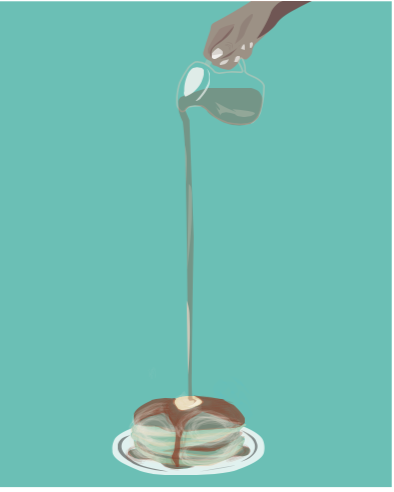
A “For Sale” sign popped up in front of one of the bigger house-on-top-of-the-hill type of homes near my neighborhood in Mission the other day, and just as soon as I’d registered its existence and came to expect its brightly coloured silhouette, it disappeared! Not two weeks into its unflinchingly steady, brutally insistent sales pitch, the sign was gone! In its place: a family, maybe — or just one wealthy person with a lot of stuff.
Similarly, the Abbotsford-Mission highway has always been a generally calm strip of pavement, or as balanced a stretch of infrastructure as a cement pathway — superimposed onto what before was probably just a sleepy, grassy field (and afterwards stayed just as sleepy a grassy field, only this time with cars buzzing impatiently through it) — has any right to be. And then, with the same quiet totality as families have been replacing “For Sale” signs in the Valley, a giant glowing colossus of a billboard appeared, blanketing its immediate vicinity with the same cold, effulgent glow one might associate with the kind of lamp dentists swing overtop of your head before doing whatever it is dentists do.
Mission’s (and, I assume, Abbotsford’s) hot-item houses and the highway billboard (a testament to capitalism’s triumph over the dark of night) aren’t unrelated. They indicate a change we often hear of but never really register until it’s already happened. We show up to our favourite restaurant and can’t get a table or a reservation for the next three months and we think: What happened?
People. People happened — are happening.
Toronto hasn’t always been as cramped or as sprawling as it is now; its age and the fact that it’s the presumed cultural and economic capital of Canada are both responsible for its growth. But a town turns into a city as its economy grows, and pushes outwards. Toronto’s 630 square kilometres, home to 2.5 million people in 2006 according to the Census, had gained a little over 100,000 inhabitants by 2011.
I use Toronto simply because it’s a big city with a well-documented population growth, but the same goes for Vancouver. There were fewer people in it 10 years ago than there are now, and at some point things got crowded. So where do those people go? They gravitate towards a city because it’s big and has all the amenities that come with being Vancouver, so they move to Burnaby or Richmond or New West. Maybe it’s gotten too expensive to live in Vancouver, maybe it’s gotten too crowded. It doesn’t matter. Like batter skilfully being poured onto a hot skillet, slowly stretching out into a flapjack, Vancouver’s inhabitants are seeking new, less-crowded ground.
Vancouver is annexing us all, not in name but in practice.
It might not be tomorrow, it might not even be the day after that, but one of these days, soon enough, you’re going to wake up, and look out your window as the ruins of Old Abbotsford are gutted to make room for new and luxurious and increasingly smaller and more expensive apartments, and you will say, “This town ain’t what it used to be.”

